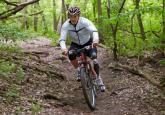As technology continues to rapidly progress, the field of prosthetics strives to capitalize on such advances. As a result, the number of prosthetic components with computerized mechanisms continues to expand so amputees can benefit from increasingly sophisticated prosthetic knees and foot/ankle systems.
Ottobock introduced the C-Leg and then the Genium microprocessor-integrated knees for civilians and the X2 for active-duty servicemen. The latest model, the X3, functions similarly to the X2 but has a waterproof feature that benefits active amputees, including military service members. The purpose of the microprocessor is to aid in adjusting gait through a system of sensors and computer processors. This technology is now also integrated into foot/ankle constructs. The BiOM T2 foot took this technology a step further by adding powered plantarflexion to improve gait dynamics. The natural next step was to combine microprocessor knee and foot/ankle systems into 1 prosthesis to use the advantages of each.
Our case report described just such an instance. In the July 2014 issue of Federal Practitioner, the article “Microprocessor Knee and Power Foot Combination in a Transfemoral Amputee,” written by Douglas Murphy, MD; John Fox, CPO; and myself was published. We reported on the positive results found in subjective functional improvement for a very active veteran who was not satisfied with his prosthetics until he found the right combination and was able to return to his previous high level of participation in long-distance running and bicycling.
Two of the most advanced systems were integrated into 1 prosthesis designed for our patient, an active transfemoral amputee. The goal was to evaluate his function with the combined prosthesis compared with that of the prosthesis with the more conventional components. The results exceeded expectations, both for the practitioners and the amputee.
Before his injury, the veteran was extremely active with running, biking, and hiking over varied terrain. He found that traditional prosthesis components did not fully meet his needs to include ambulating on snow, sand, and hills and navigating typical community obstacles, such as those in restaurants and other public spaces. With integration of the X2/T2 combination, he reported that the difficulties in these situations were significantly decreased if not eliminated altogether. He reported that the combination of units, rather than the advantages of one unit or the other, made the difference for him.
One concern of ours regarding the use of 2 computer systems simultaneously was the potential for interference, so that neither component could function optimally, or more concerning, could lead to gait instability or falls. Fortunately, that did not occur, and he has been able to enjoy the combined advantages of both components. The success, as demonstrated in this case, of combining microprocessor components at different joints has the potential to greatly expand the utility and function of future prosthetic limbs. In the future, as technology continues to advance, it may be reasonable to expect activity levels to reach or in some respects even exceed pre-injury capabilities.
